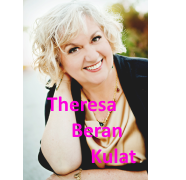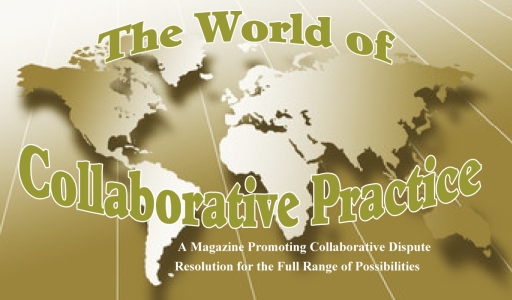
Tags
Related Posts
Share This
Archetypes at the Negotiating Table
Archetypes at the Negotiating Table
By
Theresa Beran Kulat
First articulated by the great philosopher, Plato, then more fully revealed by modern psychoanalyst Carl Jung, archetypes hold keys to unlocking the mysteries of a person’s life and can provide insights that assist negotiations at the collaborative table. After a very brief introduction to the world of archetypes, this article describes a methodology for using the language of archetypes to increase one’s self-awareness which can improve satisfaction with one’s personal and professional life. Then it offers a context, using awareness of archetypes, to improve effectiveness during the collaborative negotiation process.
Archetypes for Today
Although we live in a post-industrial age, our psyches still connect to universal themes and energies. Jung broke away from the Freudian model of analysis by pointing out that people’s lives are shaped, not only by their past, but also by forces that guide larger cultural narratives. He didn’t “discover” archetypes. He gave a name to a phenomenon that already existed and still exists today.
Simply saying the name of an archetype, conjures up images with a common energy. For example, if I say “the Child,” each person who hears it may have a slightly different “child” that they think of, but all of these children share common qualities – youth, innocence and behaviors that are child-like. Contrast that with the images that arise when I say “the Father.” This archetype connects to maturity and authority. Each archetype has certain behaviors, interests and propensities associated with it. Each has an archetypal energy.
To get more comfortable with archetypal language, start by looking at different systems. The ancients projected archetypes onto the constellations of stars in the sky and called it the zodiac. These archetypes run the gamut: the Warrior, the Artist, the Friend, the Mother, the Child, the Perfectionist, the Lover, the Sorcerer, the Gypsy, the Father, the Rebel, and the Mystic. Present day author, Caroline Myss identifies over 80 archetypes. Her system includes more modern constructs like the Addict, the Geek, the Networker and the Gardener, in addition to traditional archetypes like the Messenger, the Gambler, the Athlete and the Visionary.
Using Archetypes for Self-Awareness
Whether this article introduces you to the subject of archetypes for the first time or you have studied them for years, I offer this exercise: sit quietly and place yourself in the center of an imaginary circle. Around the circle, place four to six archetypal “individuals.” Get in touch with the ones you are most comfortable with and those that you don’t care for. One example of a combination of archetypes could be the Nun, the Miser, the Warrior, the Mother, the Slut, the Athlete. Choose your own. Give yourself plenty of time. Do the exercise in a comfortable, safe space.
Acknowledge each archetype from your place in the center of the circle. Intuitively listen to each one. An archetypal energy that has been silenced for a while will be eager to share. Doing this exercise a few years ago, the Miser explained how he had been trying to help me become more financially responsible.
The expression of each archetype falls on a continuum from healthy and supportive to highly dysfunctional. Myss uses the terms “light attributes” and “shadow attributes.” While my initial connection to the Miser archetype was “negative” or a “shadow attribute,” I got in touch with the beneficial aspects of the Miser and how working with him could be helpful.
Observe how the archetypes interact with each other. The goal here is integration. Return to your center, the place from which they all radiate, where they all meet. Observe. When the exercise feels complete, thank them and declare the connection closed. You have created an access to your point of stillness. From that vantage point you can mindfully observe your own behavior — whatever it is. This comes in handy both at the collaborative table and in life.
I have built a coaching practice to give professionals insight using tools like this to identify necessary changes and implement plans to improve their personal and professional lives. Much of it boils down to shifting one’s point of identity from the circumference of the circle to the center.
Archetypes at the Collaborative Negotiating Table
Using the simplest of Collaborative Law models – the lawyer only model, there are four people at the table. For purposes of this article I will use four archetypes (even though we know that there are more at the table): Warrior, Peacemaker, Caregiver, and Breadwinner. I submit that the psyche of each person at the table contains all four archetypes to different degrees of integration. For the sake of discussion, let’s start with a stereotypical team – Wife who scaled back her career to manage the household, who identifies as Caregiver; Husband who focused on his career and maximizing earnings as Breadwinner; Wife’s attorney, a male litigator just starting out in Collaboration as Warrior; and Husband’s attorney, female lawyer-mediator as Peacemaker. Notice that I said “stereotypical,” not archetypal. Stereotypes are watered down, simplistic versions of archetypes. They give us short-cuts for dealing with people.
You can imagine these four people in a traditional litigation setting – each going deeper into their role. Wife’s Warrior lawyer would advocate a position based on Wife’s Caregiver function even if the couple had no children. Husband’s Peacemaker attorney would set aside her mediator’s tool of fostering empathy so she can craft a case to get her client the best deal possible.
In the Collaborative setting, we aspire to shake off these entrenched roles. Still, if each person at the table identifies only with one archetype and has “disowned” the others, the negotiations will be much more challenging than if these four people are more fully integrated. Here is a concrete example of how to apply this concept. Each attorney may have his or her opinion on how the facts of the case should be viewed. The facts will determine the boundaries of what could be considered “not unconscionable,” Within a wide range of options, the couple can find a workable solution. In our first example, Breadwinner Husband, filled with guilt, considers agreeing to 20 years of maintenance after a five-year marriage. In a Collaborative negotiating process, Husband’s Peacemaker attorney can encourage Breadwinner Husband to take responsibility for his desire to end the marriage but does not allow the Husband to “give away the farm” in guilt. Both of them need a touch of Warrior to insure that Husband is not taken advantage of.
The professionals’ ability to remain centered and to teach the clients how to access the energies of the other archetypes will determine the clients’ satisfaction with the process and ultimately the long-term durability of the settlement reached. Building on that example, Wife’s Warrior attorney would educate his Caregiver client on how the law provides for some maintenance following a short marriage but would not jump on the 20-year maintenance bandwagon. If Husband and his attorney put forth a shorter duration, Wife’s attorney can, from a place of power, support Wife in creating a vision of an independent future, where she can be her own Breadwinner eventually. This moves the Wife toward wholeness.
As a collaborative practitioner with many years under my belt, I have seen clients with varying degrees of flexibility. In all cases I make sure that I am grounded in my own center before coaching them. I have a professional duty to represent them so I can introduce “the law” when necessary to aid in integration. I also have an ethical duty to help them see from the other person’s point of view to move things toward settlement.
I use archetypal language to get them to tap into their own connection to the energy. Let’s take the opposite example, if Husband resists giving Wife any maintenance and the law would clearly give her some, I ask him to remember how his father was cared for. If his parents’ relationship was traditional with division of labor (Mother Caregiver and Father Breadwinner) that may be the access for him to agree to maintenance for a specific length of time. But what if his mother died when he was young or left the family? Did another person fill that role? If so, his connection to Caregiver energy embodied by a grandparent or older sibling (or a father who made career sacrifices) may move him to see the rationale behind maintenance.
Increasing Complexity
When we take into account the other archetypes present in these four people, there are a lot more possibilities. In particular, the Victim often shows up, and the Bully is right behind. Archetypes associated with the client’s work can seep into negotiations. Imagine the Engineer’s approach to a marital balance sheet compared to the Princess’s approach. Then add children to the mix. Does Husband relate to the children as a Caregiver even though Wife is Husband’s Caregiver? Is Husband a detached Hermit or a gregarious Cheerleader when it comes to the kids?
At the collaborative negotiating table, I, as a professional, do my best when I stay centered and watch out for the activation of my own default archetypes. Then I can support my client in their journey toward wholeness.









Share your thoughts here and in your network.